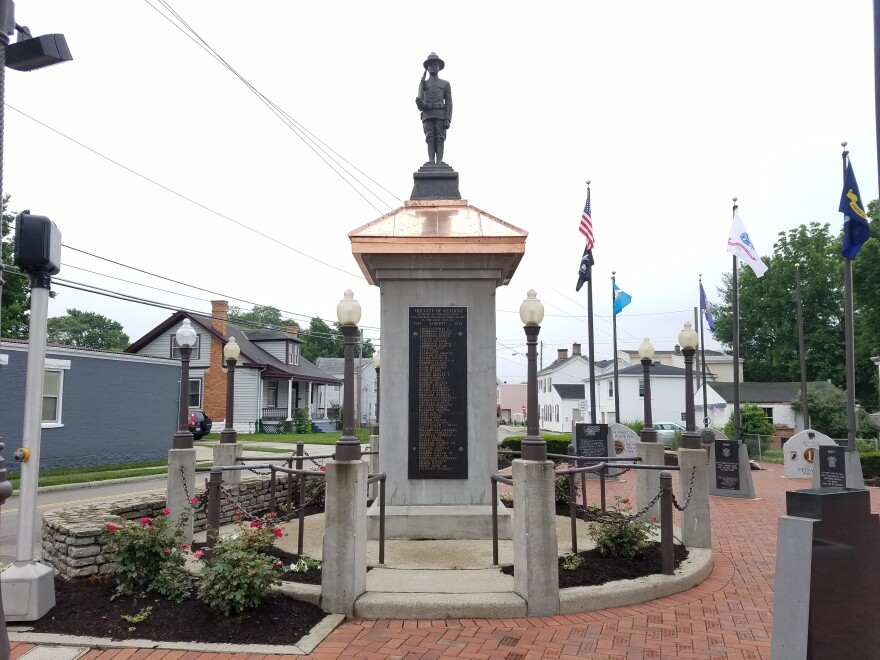The Great War ended on Armistice Day in November 1918; by June 8, 1919, the city of Reading was dedicating a memorial to the 224 soldiers from there and surrounding communities.
"Our research says that it's the oldest World War I monument in Ohio and one of the first in the country," says Reading Historical Society President Allan Rettberg. He points to a letter from the Ohio History Connection suggesting the memorial at Jefferson and Vine streets may be one of the oldest in the state and country.
Reading is rededicating its World War I 'Doughboy' Monument during a ceremony Saturday, the 100th anniversary of its original dedication.
"There's 224 soldiers on the monument and we have a photograph from the 1919 Mill Creek Valley News that shows the memorial was up and standing just two to two-and-a-half months after the war ended," Rettberg says. "But it wasn't dedicated until June 8 and I believe that was because they wanted to wait for the soldiers to return home."

Only 10 of the 224 soldiers died during the war, Rettberg says, and not all while in action. Two contracted the Spanish flu and one died in a Navy accident. Not everyone saw active duty in Europe, according to Rettberg, but all served in the military during the war.
The rifle-carrying doughboy sitting atop the memorial was created by Michael Roth - a contractor and mayor of Reading during the war - using his son Alfred, a World War I soldier, as a model.
"Doughboy" was the nickname given to World War I American soldiers on the Western Front serving under General John Pershing. According to the National World War I Museum and Memorial, the nickname likely originates from soldiers along the Mexican border.
"Reconciliation with Mexico had just concluded in 1916 when marching foot soldiers in Pershing's Expeditionary Force traveled south of the border to fight rebel Pancho Villa. Covered in white adobe dust, the foot soldiers were called 'adobes' or 'dobies' by mounted troops. Within a few months, these dobies, or doughboys, were redeployed to Europe," the museum explains.

Reading will also dedicate a new monument honoring Vietnam veterans Saturday. The 11 a.m. ceremony will include guest speaker U.S. Representative Brad Wenstrup, patriotic music from the U.S. Air Force Band of Flight, and students reading the 224 names on the monument.
The celebration begins at 10 a.m. with a concert by the UC Community Band at Koenig Park. Participants will then process to the Veterans Plaza at Jefferson and Vine streets.
Local community cable provider ICRC created a video preview of the event.



